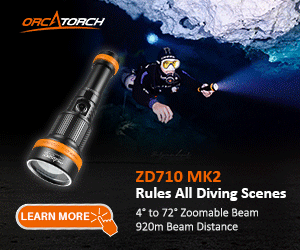TravelGas
Contributor
I was certified in an upstate N.Y. Lake also. I took Basic Scuba as a College class and the check out dive was in Lake Otsego in Cooperstown, (Baseball Hall of Fame) N.Y. In May 1986. The Winter of 1985/86 was by far the longest, snowiest and coldest of the 4 Winters that I was there.
The check out dive at the end of the semester was our only open water dive and we only made one dive. We had old well worn 2 piece 7MM wet suits, hoods, thick gloves, wrist mounted depth gauges and compass and AL80 tanks. There was still ice floating on the surface of the water. I remember the bottom was 60’ and temps we were told were in the 40’s, it was cold.
The Instr would take 2 students at a time from the main boat down a line 60’ to a submerged tree where we would clear our masks, buddy breath for awhile and then ascend the line with him. He had just gotten a dry suit and was wearing it. We had a lot of lead weight on.
We had a second boat, that in the event of an emergency the diver would be placed in the second boat, which was smaller and faster than the main boat and would be taken to shore with another person driving the boat who would go to a lake side College owned building to use a land line phone to call for an ambulance, that no doubt would have a long response time, if an ambulance was needed. That was the emergency plan.
4 years later, my last semester prior to graduating. I was the teaching assistant for the class and was the guy who waited in the second boat in case of an emergency. So the process that I went thru was very similar to what was described in that article. I can tell you coming from a heated pool and making your first dive in those conditions and descending to 60’ was a bit of a shock. I would imagine that these conditions and process was very similar to what was described in the above article.
The check out dive at the end of the semester was our only open water dive and we only made one dive. We had old well worn 2 piece 7MM wet suits, hoods, thick gloves, wrist mounted depth gauges and compass and AL80 tanks. There was still ice floating on the surface of the water. I remember the bottom was 60’ and temps we were told were in the 40’s, it was cold.
The Instr would take 2 students at a time from the main boat down a line 60’ to a submerged tree where we would clear our masks, buddy breath for awhile and then ascend the line with him. He had just gotten a dry suit and was wearing it. We had a lot of lead weight on.
We had a second boat, that in the event of an emergency the diver would be placed in the second boat, which was smaller and faster than the main boat and would be taken to shore with another person driving the boat who would go to a lake side College owned building to use a land line phone to call for an ambulance, that no doubt would have a long response time, if an ambulance was needed. That was the emergency plan.
4 years later, my last semester prior to graduating. I was the teaching assistant for the class and was the guy who waited in the second boat in case of an emergency. So the process that I went thru was very similar to what was described in that article. I can tell you coming from a heated pool and making your first dive in those conditions and descending to 60’ was a bit of a shock. I would imagine that these conditions and process was very similar to what was described in the above article.




